Manuscripts Etc.
| CLOSE WINDOW |

|
The following items are drawn from the William Faulkner Foundation Collection at the University of Virginia's Albert and Shirley Small Special Collections Library (http://small.library.virginia.edu/). |
|
The 21-page typescript of the story in the Virginia Faulkner Foundation Collection is typed on the backs of letterhead stationery from the Mayflower Hotel in Washington, D.C. (below left). Faulkner stayed in Washington in October, 1939; given his chronic thriftiness with paper, it's safe to conclude that he took advantage of his stay to help himself to a free supply. In his biography, Joseph Blotner suggests Faulkner wrote the story shortly before taking the trip, in which case this extant typescript would be at least a second draft - a supposition that is supported by the clean state of its text. While basically the same, there are numerous differences between this text (center left) and the story as it was published in Collier's (center right), so Faulkner revised it at least one more time before the magazine bought in in January, 1940. In both this typescript and the magazine versions, Lucas speaks with a much thicker black dialect than in the revised version of the story that Faulkner includes in "The Fire and the Hearth" chapter of the novel Go Down, Moses (1942): "gwine down," for example, in the opening paragraph, becomes "going down" in the novel. Along this same line of racial representation, two differences between typescript and magazine are worth noting. First: the phrase "other young men he knew" in the typescript's third paragraph becomes the much cruder "buck niggers he knew" in the magazine. The second example tilts away from this kind of profiling: the typescript's description on page 9 (below right) of George Wilkins as a stereotypical "buck" - his face "full of teeth," his "swagger" and his rakish hat - does not appear in the Collier's text. 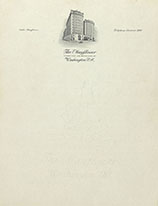 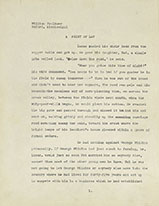  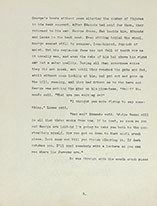 In the decade after Faulkner wrote this story, he will return to and revise Lucas' character a number of times; by the time he appears as the unjustly accused murderer in Intruder in the Dust (1948), he is probably the most impressive black male in the Yoknapatawpha fictions. But there are several places in this first incarnation of Lucas that reveal Faulkner's uncertainty about how to represent him - or even to name him. His full name appears only once, when Judge Gowan refers to him as "Lucas Beauchamp" (see page 16, further below). Lucas refers to himself as "Lucas" in his thoughts (page 1, above) but as "Luke" when identifying himself to his white landlord. All the characters in the story - including the black George Wilkins - refer to him as "Luke." However, the narrator always calls him "Lucas," except for two slips which are quickly corrected in the typescript (see page 14, below center). In this story, by the way, Lucas' wife is never named at all. In addition, two revisions between typescript and magazine versions suggest a tension between the essentially comic role Lucas plays here and the more complex human being he will become in Faulkner's imagination. The first is subtle: in the magazine version, the italics are removed from the representation of his thoughts at the top of page 5 (below left); Faulkner's use of them typographically connects this black man's thinking to the representation of white consciousness elsewhere in his fiction. The second is more obvious: the magazine version omits the italicized passage on pages 14-15 (below center and right) in which his landlord, Carothers Edmonds, looks at Lucas with respect. Faulkner restored it in the novel, where Lucas and Edmonds are depicted as blood relatives, both descended from the same plantation- and slave-owning ancestor. 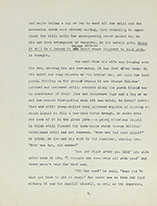 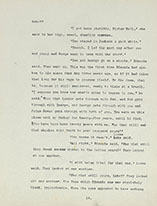 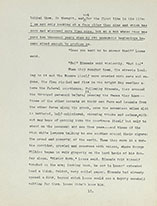 The most sustained pattern of revision between the typescript and the story's publication involves the "point of law" alluded to in the title. Faulkner revises Lucas' realization of how he can manipulate the (quasi-)legal fact that "a man's kinfolks can't tell on him in court." And as you can see from the pages below, he expands the description and implication of the "thick, folded, very soiled paper" (page 15 above) that Lucas has Edmonds introduce at his trial. Neither the typescript nor magazine versions, however, nor for that matter the version that appears in Go Down, Moses, clears up the uncertainty about when Nat and George actually were married, or why Nat spends the three weeks before the trial in Jackson. 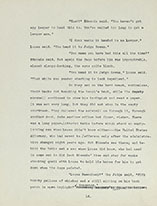  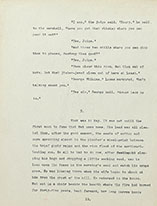 Citing this source:
|
